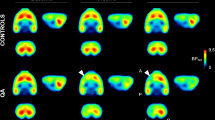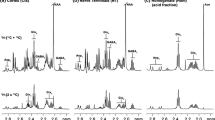Abstract
Induction of the mitochondrial permeability transition has been proposed as an important contributor to cell loss in several neurological disorders, but the evidence that this change can develop in cells in the intact mature brain is largely indirect. In this study, we have tested whether an intrastriatal injection of N-methyl-d-aspartate results in increases in inner membrane permeability that can be detected from mitochondrial accumulation of metabolites of 3H-deoxyglucose previously taken up by brain cells. An increase in incorporation of deoxyglucose metabolites was found in mitochondria prepared from the striatum but not from cerebral cortex distant from the injection site. This change developed more than 8 h after treatment with N-methyl-d-aspartate and is consistent with the induction of the permeability transition as a late change in the progression to irreversible neuronal damage in response to this excitotoxic insult. At earlier times, the restricted permeability of the inner mitochondrial membrane was apparently preserved, at least sufficiently to prevent significant diffusion of metabolites between the cytoplasm and the matrix.
Similar content being viewed by others
References
Orth, M. and Schapira, A. H. V. 2001. Mitochondria and degenerative disorders. Am. J. Med. Genet. 106:27–36.
Wieloch, T. 2001. Mitochondrial involvement in acute neurodegeneration. IUBMB Life 52:247–254.
Sims, N. R. and Anderson, M. F. 2002. Mitochondrial contributions to tissue damage in stroke. Neurochem. Int. 40:511–526.
Newmeyer, D. D. and Ferguson-Miller, S. 2003. Mitochondria: Releasing power for life and unleashing the machineries of death. Cell 112:481–490.
Friberg, H. and Wieloch, T. 2002. Mitochondrial permeability transition in acute neurodegeneration. Biochimie 84:241–250.
Zoratti, M. and Szabo, I. 1995. The mitochondrial permeability transition. Biochim. Biophys. Acta 1366:151–165.
Bernardi, P., Basso, E., Colonna, R., Costantini, P., Dilisa, F., Eriksson, O., Fontaine, E., Forte, M., Ichas, F., Massari, S., Nicolli, A., and Petronilli, V. 1998. Perspectives on the mitochondrial permeability transition. Biochim. Biophys. Acta 1365:200–206.
Nieminen, A. L., Petrie, T. G., Lemasters, J. J., and Selman, W. R. 1996. Cyclosporin A delays mitochondrial depolarization induced by N-methyl-D-aspartate in cortical neurons: Evidence of the mitochondrial permeability transition. Neuroscience 75:993–997.
Schinder, A. F., Olson, E. C., Spitzer, N. C., and Montal, M. 1996. Mitochondrial dysfunction is a primary event in glutamate neurotoxicity. J. Neurosci. 16:5688–5697.
White, R. J. and Reynolds, I. J. 1996. Mitochondrial dysfunction in glutamate-stimulated neurons: An early signal specific to excitotoxin exposure. J. Neurosci. 16:5688–5697.
Alano, C. C., Beutner G., Dirksen R. T., Gross, R. A., and Sheu, S.-S. 2002. Mitochondrial permeability transition and calcium dynamics in striatal neurons upon intense NMDA receptor activation. J. Neurochem. 80:531–538.
Yoshimoto, T. and SiesjÖ, B. K. 1999. Posttreatment with the immunosuppressant cyclosporin A in transient focal ischemia. Brain Res. 839:283–291.
Griffiths, E. J. and Halestrap, A. P. 1995. Mitochondrial non-specific pores remain closed during cardiac ischemia, but open upon reperfusion. Biochem. J. 307:93–98.
Halestrap, A. P., Kerr, P. M., Javadov, S., and Woodfield, K.-Y. 1998. Elucidating the molecular mechanism of the permeability transition pore and its role in reperfusion injury of the heart. Biochim. Biophys. Acta 1366:79–94.
Puka-Sundvall, M., Gilland, E., and Hagberg, H. 2001. Cerebral hypoxia-ischemia in immature rats: Involvement of mitochondrial permeability transition? Dev. Neurosci. 23:192–197.
Qin, Z. H., Wang, Y., and Chase, T. N. 1996. Stimulation of N-methyl-D-aspartate receptors induces apoptosis in rat brain. Brain Res. 725:166–176.
Zaidan, E., Nilsson, M., and Sims, N. R. 1999. Cyclosporin A-sensitive changes in mitochondrial glutathione are an early response to intrastriatal NMDA or forebrain ischemia in rats. J. Neurochem. 73:2214–2217.
Brown, M. R. and Hedge, G. A. 1972. Thyroid secretion in the unanesthetised stress-free rat and its suppression by pentobarbital. Neuroendocrinology 9:158–74.
Sims, N. R. 1990. Rapid isolation of metabolically active mitochondria from rat brain and subregions using Percoll density gradient centrifugation. J. Neurochem. 55:698–707.
Robinson, J. B., Brent, L. G., Sumegi, B., and Srere, P. A. 1987. An enzymatic approach to the study of the Krebs tricarboxylic acid cycle. Pages 153–170, in Darley-Usmar, V. M., Rickwood, D., and Wilson, M. T. (eds.), Mitochondria: A practical approach, IRL Press Ltd, Oxford.
Friberg, H., Ferrand-Drake, M., Bengtsson, F., Halestrap, A. P., and Wieloch, T. 1998. Cyclosporin A, but not FK-506, protects mitochondria and neurons against hypoglycemic damage and implicates the mitochondrial permeability transition in cell death. J. Neurosci. 18:5151–5159.
Lowry, O. H., Rosebrough, N. J., Farr, A. L., and Randall R. J. 1951. Protein measurement with the Folin-phenol reagent. J. Biol. Chem. 193:265–275.
Zaidan, E. and Sims, N. R. 1994. The calcium content of mitochondria from brain subregions following short-term forebrain ischemia and recirculation in the rat. J. Neurochem. 63:1812–1819.
Sokoloff, L., Reivich, M., Kennedy, C., Des Rosiers, M. H., Patlak, C. S., Pettigrew, K. D., Sakurada, O., and Shinohara, M. 1977. The [14C]deoxyglucose method for the measurement of local cerebral glucose utilization: Theory, procedure, and normal values in the conscious and anesthetized albino rat. J. Neurochem. 28:897–916.
Bai, G., Rama Rao, K. V., Murthy, C. R. K., Panickar, K. S., Jayakumar, A. R., and Norenberg, M. D. 2001. Ammonia induces the mitochondrial permeability transition in primary cultures of rat astrocytes. J. Neurosci. Res. 66:981–991.
Silver, I. A. and Erecinska, M. 1992. Ion homeostasis in rat brain in vivo: Intra and extracellular [Ca2+] and [H+] in the hippocampus during recovery from short-term transient ischemia. J. Cereb. Blood Flow Metab. 12:759–772.
Brustovetsky, N. and Dubinsky, J. M. 2000. Dual responses of CNS mitochondria to elevated calcium. J. Neurosci. 20:103–113.
Author information
Authors and Affiliations
Corresponding author
Rights and permissions
About this article
Cite this article
Zaidan, E., Nilsson, M. & Sims, N.R. Increased Mitochondrial Permeability in Response to Intrastriatal N-Methyl-d-Aspartate: Detection Based on Accumulation of Radiolabel from [3H]Deoxyglucose. Neurochem Res 29, 609–616 (2004). https://doi.org/10.1023/B:NERE.0000014831.65991.6a
Issue Date:
DOI: https://doi.org/10.1023/B:NERE.0000014831.65991.6a




